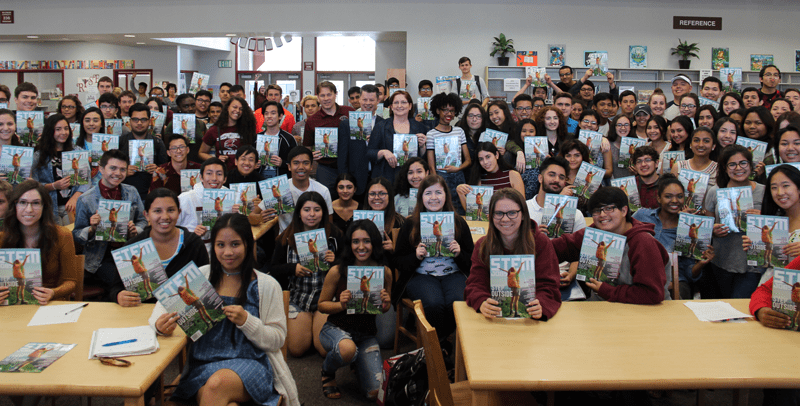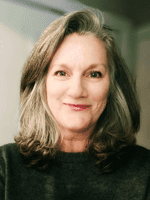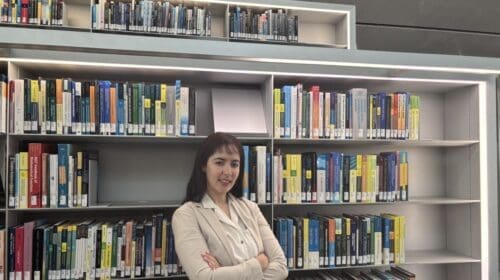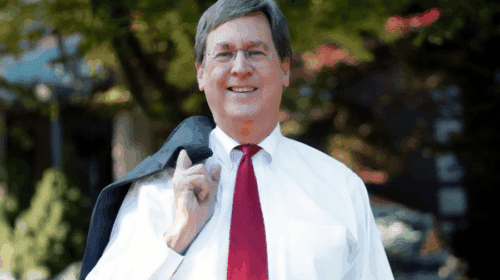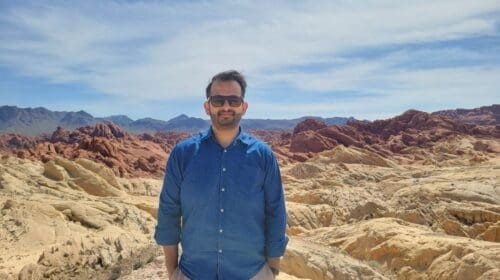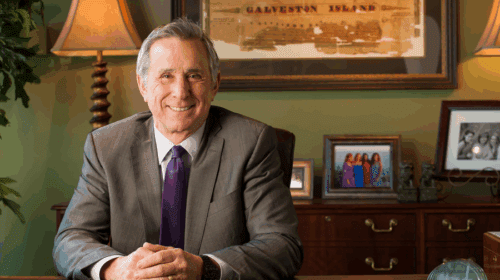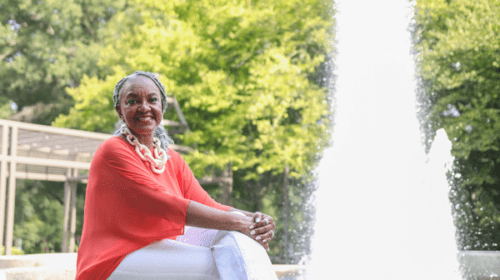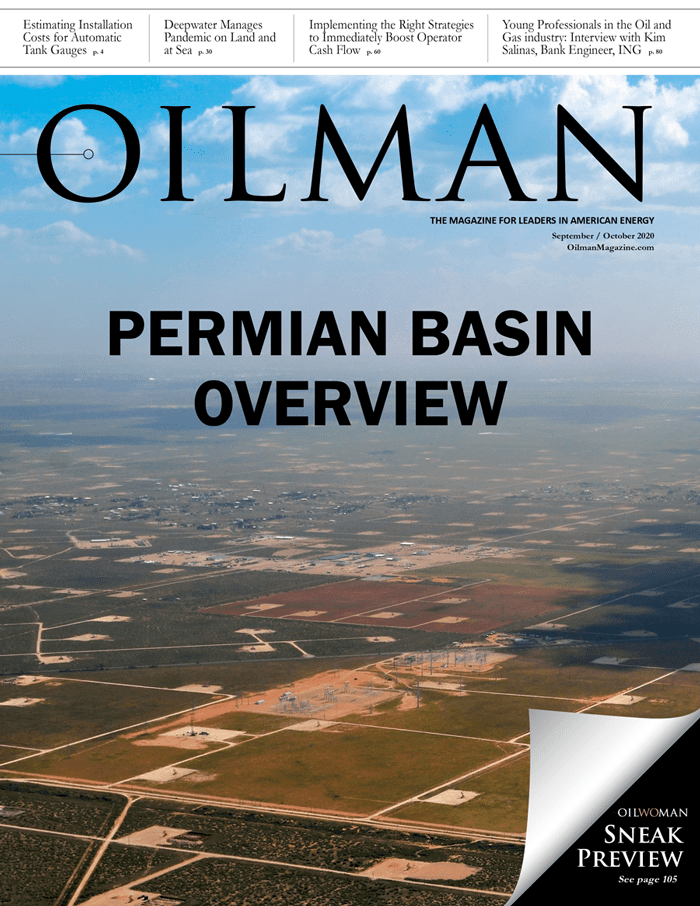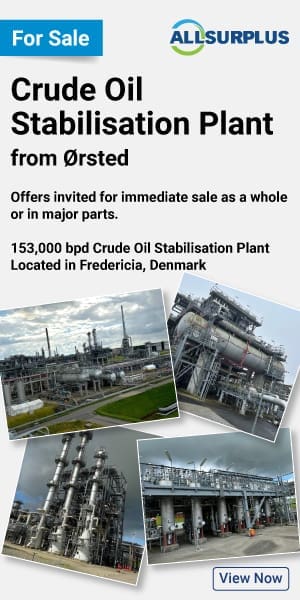After more than five years at the helm of California-based Aera Energy, which is jointly owned by Shell Oil and ExxonMobil’s affiliates, outgoing President and CEO Christina Sistrunk prepares to step down and begin her next act. Prior to her October 1st departure, which will see her succeeded by COO Erik Bartsch, she talks to OILWOMAN about California’s energy future and the role Aera will continue to play, as well as the lasting effect she has had on Aera’s culture as its first female CEO.
CEOs are just like everyone else (actually, they’re not); however, COVID-19 has leveled the playing field slightly. As Christina Sistrunk and I log onto our video call, I find her looking relaxed, dressed casually sans make-up, and what appears to be a feline playground in the background of her makeshift home office. A cat toy gently swings back and forth just waiting to be swiped by a playful cat. Technical difficulties arise and we switch to another service and opt for audio only, so I never get to see Tux, the cat that the family acquired when he was discovered under the deck of their home in New Orleans as they were rebuilding after Hurricane Katrina. “His vet says he won the kitty lottery – our daughter would bring him to visit us when we lived in Europe. So, from feral rescue to world traveler, he’s one of the family.”
Sistrunk has generously found time in her schedule to talk less than two months before she retires after nearly 40 years of a successful career in oil and gas, an industry that has seen few women reach the top. “In fairness to my two predecessors,” she says, referring to founding President and CEO Eugene Voiland (1997 – 2007) and his successor, Gaurdie Banister, Jr. (2007 – 2015), “I think each of them, in some ways, leveraged their experiences to build the foundation at Aera that I walked into.”
Both Banister, as the company’s first African American president and CEO, and Sistrunk as its first female president and CEO, broke barriers, although that was not a unique situation for Sistrunk (and, undoubtedly, not for Banister either). “For a large portion of my career, it’s not been unusual for me to be the only woman, or one of a few, in the room.” Given that, she says, “I think my approach to the business has been a bit different, but I think every CEO at this company has brought their full breadth of experience, what uniquely made them successful, and has invested that in the company, and that’s how we continue to evolve and get stronger.”
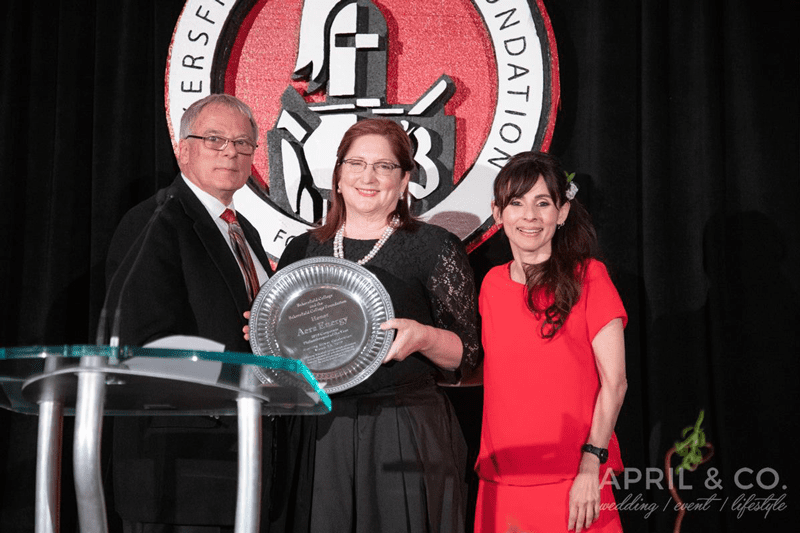
Sistrunk acknowledges that being a female CEO has had an effect on company culture and believes Aera has become more diverse under her leadership. “We may be the only oil and gas company I know of that has a majority of women on the senior leadership team. And, in fact, until a recent board transition, we had a six-member board of managers, half of which were women.” (According to research published by the Harvard Business Review in July 2020, only seven percent of oil and gas JVs board directors are women, making Aera a rarity.)
Sistrunk attributes this to her prioritization of talent development. “During my tenure, I’ve really focused on developing our leaders to be more capable, more effective at employee engagement, more open to really understanding what their people need to be successful, and more focused on employee development.” While this is beneficial to all employees, it is critical to attracting and retaining women and other minorities in an industry whose workforce still lags behind that of others in terms of diversity. (According to McKinsey’s Women in the Workplace 2018, women make up only 15 percent of the oil and gas workforce.) “If you want to innovate, and you truly want to attract and retain the best talent, you’ve got to [make that your focus].”
She also wants women, whom studies have shown are more risk averse than men, to be willing to “bet on themselves,” which is exactly what she did when she decided to leave a 16-year career at Amoco to take on a role at Shell. “That was a very, very hard decision for me,” Sistrunk says, because of the relationships she had developed over time and the reputation she had established for herself within the company and the community.
“I didn’t know anybody at Shell, and they didn’t know me or what I was capable of. One of my mentors actually asked me to check whether I was making my decision based on fear or on what I aspired to create?”
Convinced she wasn’t going to have the level of opportunities at Amoco that she wanted to have in the long-term, and with her mentor challenging her to take a leap of faith and believe in herself, Sistrunk made the move. “While I’ll never know what would’ve happened had I chosen to stay, I do know that I’ve gotten to do work that was more challenging and more rewarding than I ever imagined because I was willing to bet on myself.”

That phrase is something her longtime mentor has told her more than once and she is thankful to have been able to seek his advice and counsel for 25 years. Even now – especially now – as CEO, she says she needs that outside guidance. “The role is different, certainly, and has different demands, but the need to network and to continue to challenge your thinking becomes more important than ever.”
California, a state with over 39.5 million people, uses a hundred percent of all local oil production and imports an additional 70 percent of the oil it consumes every day. Aera produces nearly 25 percent of the state’s oil and gas from its operations located in the San Joaquin Valley – Kern County is one of the nation’s largest oil-producing regions – and additional fields in Fresno, Monterey and Ventura counties.
While Aera fully supports the state’s climate ambitions, Sistrunk believes, “California’s going to continue to need locally-produced oil that is delivered at the highest safety and environmental standards in the world for decades to come. I don’t think the transition is going to come as fast or as easily as they would like.” Taking into account the amount of oil the state uses, she is convinced consumption would have to fall considerably to eliminate the need for local production.
In addition, she says, “California’s an energy island, really. None of the oil production in the rest of the U.S., particularly in Texas, crosses the Rockies – none of that comes west, because the pipelines don’t exist. Some of the imports that California uses come from Alaska, but Alaska’s production is falling. Increasingly, the imports are coming from Saudi Arabia and Iraq, and so it’s a very interesting situation.”
Another issue California is facing is how to handle carbon capture and storage, in order to meet its greenhouse gas reduction targets in the long term. As Sistrunk points out, the oil and gas industry has capabilities to deliver carbon capture and storage (CCS) but, of the 10 facilities in the U.S. (with a number of others in various stages of completion), none are located in California.
“Aera’s taking a multi-decade view of how we can continue to provide the energy that the state needs to get food on the table, and make sure all of us have the ability to enjoy the quality of life that we expect in California in a cost-effective [manner]. Aera’s got a role in continuing to provide that energy in the safest, most environmentally responsible way, with an increasingly improving carbon footprint in the process.”
Ultimately, Sistrunk believes that’s possible, but says, “We’re going to have to evolve, and adapt, and innovate, and use new technology to continue to reduce our carbon footprint while we do that.”
As the industry is slowly coming to realize, one of the best ways to solve the issues it faces is with a workforce that is diverse in thought and experience and myriad other qualities that spark innovation while being inclusive of those outside the dominant group, which traditionally has been white males.
“Inclusion is a set of behaviors that we need to consistently exhibit, so that everyone is heard, valued, and has a chance to contribute,” Sistrunk says. “And diversity is all the ways in which we’re similar and different. Without real inclusion, it’s likely that our diversity will actually divide us.”
Because Aera has a female CEO, a female board chair, Sinead Gorman, and a female-dominated leadership team, Sistrunk says people may see that as representative of the company’s diversity; however, diversity incorporates so many other metrics.
A number of companies have started putting the emphasis on “inclusion,” calling it I&D, when they talk about their DEI initiatives and Sistrunk says that’s always been the case at Aera. “We’re continuing to learn and evolve by focusing on how we improve inclusion and understanding at every level of the organization. That’s critical for us when we’re thinking about how we recruit talent, how we develop that talent, how we use the capabilities of everyone to continually reinvent how we work – not only to meet our financial expectations, but our people live in the communities we operate in. So, when we think about those expectations for safety performance, environmental performance, and social responsibility, it’s what our families, and our neighbors, and our friends expect from us.”
“I am so thankful I’m surrounded by a team that really does have the ability to think about the issues we’re facing through a number of different lenses because we do have that depth and breadth that comes from having so many different experiences sitting around the table.”
The ability to approach a problem from different angles couldn’t be any more imperative than it is now as Aera – like the rest of the industry, the country and the world – deals with the disruption caused by COVID-19. Prior to March 12th, Sistrunk says Aera had virtually no history of work being done remotely. “On Friday, March 13th, we made the decision to shut down most of our offices and move over 70 percent of our workforce to remote work. By Monday morning, we were up and running.”
“We do believe that collaborating, mentoring, learning from each other, and just reinforcing our sense of community – which has always been so strong at Aera – is actually a big part of our value proposition for our employees.” Sistrunk is also convinced one of the reasons working remotely has been successful is because Aera had cultivated a strong company culture to begin with. She acknowledges that the longer people are separated, the harder it will be to maintain that sense of community and believes it will necessitate developing some type of hybrid work model in the future.
As the industry searches for new paradigms, the current crisis has also required leadership to be more attuned to the needs of its employees, including those in the Latino and Black communities disproportionately affected by the health crisis, as well as the Asian community, which has faced discrimination because of the origins of the virus. There are employees who have family members on the police force during this time of social unrest; others may be at-risk or are caretakers of someone who is. In addition, because the industry is considered essential, Sistrunk says about 30 percent of their workforce has continued working on-site every day. “It’s being sensitive to all of that and I actually think we’ve grown our level of employee engagement. The foundation we had [pre-COVID] was critical.”
“One of the things that I have so appreciated about working in oil and gas for close to four decades now, is I can name so many examples where I’ve worked with others to tackle problems that we did not think were solvable – and we found solutions. We have adapted technology and innovated, and we have continuously improved both our safety and environmental performance. I actually have great confidence that we’re going to find our way to the other side and be stronger based on what we learned together in the process of responding to this challenge.”
Christina Sistrunk’s Next Act
The first thing I want to do is . . . spend more time with family and friends.
My greatest indulgence will be . . . to have more time to read.
Something I didn’t have time to do while I was working but can’t wait to do now is . . . spend more time at Big Bay Lake, outside of Hattiesburg, Mississippi, where we have a place.
Something I never want to do again is . . . miss Jazz Fest in New Orleans. (I won’t say never, but I probably could deal with a few less Zoom calls!)
The first thing I’m going to read is . . . George Orwell’s 1984. I’ve never read it, and I think that’s probably going to be top of the list.
I want to binge watch . . . a whole litany of classic movies and their remakes.
As soon as it’s safe to travel by plane, train, automobile or however I can get there . . . my husband and I are going to go to Key West first, and then probably to the Grand Canyon.
When I told my husband I was going to retire, his reaction was . . . “What are you going to do to keep busy? You don’t sit still well.”
Headline photo courtesy of Aera Energy, LLC: Sistrunk shares insight into a STEM career with students in the Energy Academy at Independence High School in Bakersfield, CA. Also pictured Richard Chapman.
Rebecca Ponton is the editor in chief at U.S. Energy Media and author of Breaking the Gas Ceiling: Women in the Offshore Oil and Gas Industry. She is the publisher of Books & Recovery digital magazine.

